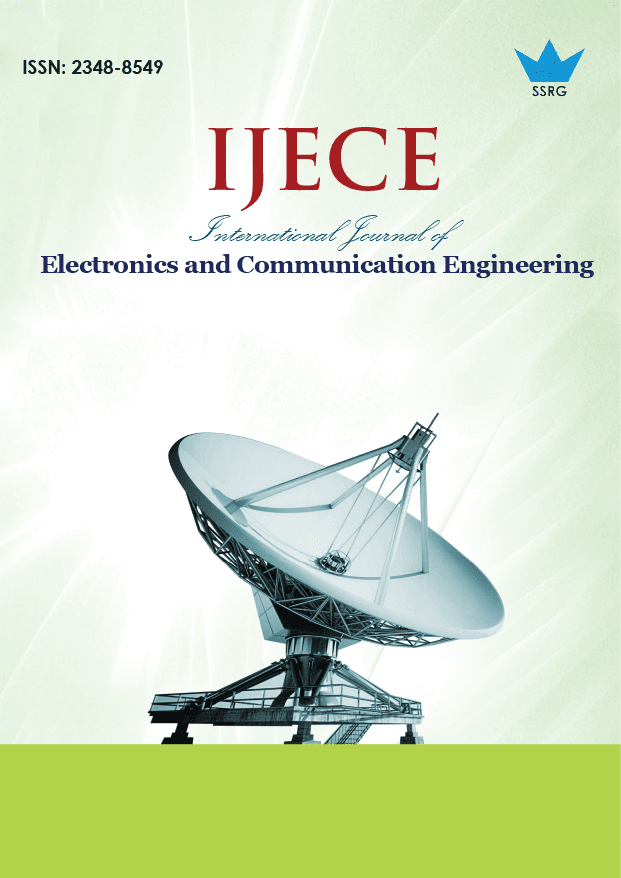A Hybrid AI Model Integrating Decision Trees, LSTM and XGBoost for Financial Risk Forecasting

| International Journal of Electronics and Communication Engineering |
| © 2025 by SSRG - IJECE Journal |
| Volume 12 Issue 10 |
| Year of Publication : 2025 |
| Authors : Nisa Vinodkumar, Archana Anandapadmanabhan |
How to Cite?
Nisa Vinodkumar, Archana Anandapadmanabhan, "A Hybrid AI Model Integrating Decision Trees, LSTM and XGBoost for Financial Risk Forecasting," SSRG International Journal of Electronics and Communication Engineering, vol. 12, no. 10, pp. 64-72, 2025. Crossref, https://doi.org/10.14445/23488549/IJECE-V12I10P107
Abstract:
The financial sector has been able to automate and improve decision-making processes, especially in risk forecasting, owing to the rapid advancement of Artificial Intelligence (AI). This paper proposes a hybrid AI-based model. It uses XGBoost for strong predictions, Decision Trees (DTs) for sorting data based on rules, and Long Short-Term Memory (LSTM) networks to find patterns over time in financial data. In particular, in highly unpredictable market circumstances, it is required to improve the reliability and precision of financial risk assessment. To train and test the model, a publicly accessible financial dataset that includes records of past loans and transactions is employed. Then its performance is compared to that of conventional single-model methods. When looking at traditional AI models like logistic regression, random forest, and standalone LSTM, the results confirm that the proposed new hybrid model works better, predicts more accurately, and is cheaper. This study emphasizes the possibility of using sequential and ensemble learning frameworks to build data-driven financial forecasting systems that are knowledge-based and impartial.
Keywords:
Decision Tree, Financial Risk Forecasting, Hybrid AI, LSTM, Time-Series Prediction, XGBoost.
References:
[1] Nesrine Gafsi, “Machine Learning Approaches to Credit Risk: Comparative Evidence from Participation and Conventional Banks in the UK,” Journal of Risk and Financial Management, vol. 18, no. 7, pp. 1-18, 2025.
[CrossRef] [Google Scholar] [Publisher Link]
[2] Foued Saâdaoui, and Hana Rabbouch, “Financial Forecasting Improvement with LSTM-ARFIMA Hybrid Models and Non-Gaussian Distributions,” Technological Forecasting and Social Change, vol. 206, 2024.
[CrossRef] [Google Scholar] [Publisher Link]
[3] Cheng Zhang, Nilam Nur Amir Sjarif, and Roslina Ibrahim, “Deep Learning Models for Price Forecasting of Financial Time Series: A Review of Recent Advancements: 2020–2022,” Wiley Interdisciplinary Reviews: Data Mining and Knowledge Discovery, vol. 14, no. 1, pp. 1-33, 2024.
[CrossRef] [Google Scholar] [Publisher Link]
[4] Xuemin Huang et al., “A Hybrid ARIMA-LSTM-XGBoost Model with Linear Regression Stacking for Transformer Oil Temperature Prediction,” Energies, vol. 18, no. 6, pp. 1-21, 2025.
[CrossRef] [Google Scholar] [Publisher Link]
[5] Dominik Stempień, and Robert Ślepaczuk, “Hybrid Models for Financial Forecasting: Combining Econometric, Machine Learning, and Deep Learning Models,” Arxiv Preprint, pp. 1-30, 2025.
[CrossRef] [Google Scholar] [Publisher Link]
[6] Victor Chang et al., “Credit Risk Prediction Using Machine Learning and Deep Learning: A Study on Credit Card Customers,” Risks, vol. 12, no. 11, pp. 1-33, 2024.
[CrossRef] [Google Scholar] [Publisher Link]
[7] Chen Zhang, and Xinmiao Zhou, “Forecasting Credit Risk of SMEs in Supply Chain Finance Using Bayesian Optimization and XGBoost,” Mathematical Problems in Engineering, vol. 2023, no. 1, pp. 1-14, 2023.
[CrossRef] [Google Scholar] [Publisher Link]
[8] Chang Yu et al., “Gradient Boosting Decision Tree with LSTM for Investment Prediction,” Arxiv Preprint, pp. 1-6, 2025.
[CrossRef] [Google Scholar] [Publisher Link]
[9] Zhuangwei Shi et al., “Attention-Based CNN-LSTM and XGBoost Hybrid Model for Stock Prediction,” Arxiv Preprint, pp. 1-7, 2022.
[CrossRef] [Google Scholar] [Publisher Link]
[10] Hassan Oukhouya et al., “Forecasting International Stock Market Trends: XGBoost, LSTM, LSTM-XGBoost, and Backtesting XGBoost Models,” Statistics, Optimization & Information Computing, vol. 12, no. 1, pp. 200-209, 2024.
[CrossRef] [Google Scholar] [Publisher Link]
[11] Hui Zhang, and Weihua Zhang, “Advancing Enterprise Risk Management with Deep Learning: A Predictive Approach Using the XGBoost-CNN-BiLSTM Model,” PloS One, vol. 20, no. 4, pp. 1-23, 2025.
[CrossRef] [Google Scholar] [Publisher Link]
[12] Xinyu Sun, Jiayu Liu, and Yan Zhang, “Enhancing Credit Risk Prediction through an Ensemble of Explainable Model,” Journal of Systems Science and Systems Engineering, pp. 1-22, 2025.
[CrossRef] [Google Scholar] [Publisher Link]
[13] Harsh Pathak Shreya, “Explainable Artificial Intelligence Credit Risk Assessment Using Machine Learning,” Arxiv Preprint, pp. 1-15, 2025.
[CrossRef] [Google Scholar] [Publisher Link]
[14] Sijing Yu, “Advancing Stock Market Return Forecasting with LSTM Models and Financial Indicators,” Advances in Economics, Management and Political Sciences, vol. 122, pp. 137-144, 2024.
[CrossRef] [Publisher Link]
[15] Sima Siami-Namini, and Akbar Siami Namin, “Forecasting Economics and Financial Time Series: ARIMA vs. LSTM,” Arxiv Preprint, pp. 1-19, 2018.
[CrossRef] [Google Scholar] [Publisher Link]
[16] Yi Chen, Youzhong Dong, and Wen Liu, “Prediction of Credit Default Based on the XGBoost Model,” Applied and Computational Engineering, vol. 96, pp. 85-92, 2024.
[CrossRef] [Publisher Link]
[17] Yuwen Zeng et al., “Integrated RFE-XGBoost Credit Risk Prediction for SMEs Using Multi-Source Heterogeneous Big Data,” Proceedings of the 3rd International Conference on Big Data Economy and Digital Management, Ningbo, China, pp. 1-10, 2024.
[CrossRef] [Publisher Link]
[18] Mengran Zhu et al., “Ensemble Methodology: Innovations in Credit Default Prediction Using LightGBM, XGBoost, and LocalEnsemble,” 2024 IEEE 4th International Conference on Electronic Technology, Communication and Information, Changchun, China, pp. 421-426, 2024.
[CrossRef] [Google Scholar] [Publisher Link]
[19] Hakan Pabuccu, and Adrian Barbu, “Feature Selection with Annealing for Forecasting Financial Time Series,” Financial Innovation, vol. 10, pp. 1-26, 2024.
[CrossRef] [Google Scholar] [Publisher Link]
[20] Shiqi Yang et al., “Interpretable Credit Default Prediction with Ensemble Learning and SHAP,” arXiv Preprint, pp. 1-5, 2025.
[CrossRef] [Google Scholar] [Publisher Link]

 10.14445/23488549/IJECE-V12I10P107
10.14445/23488549/IJECE-V12I10P107